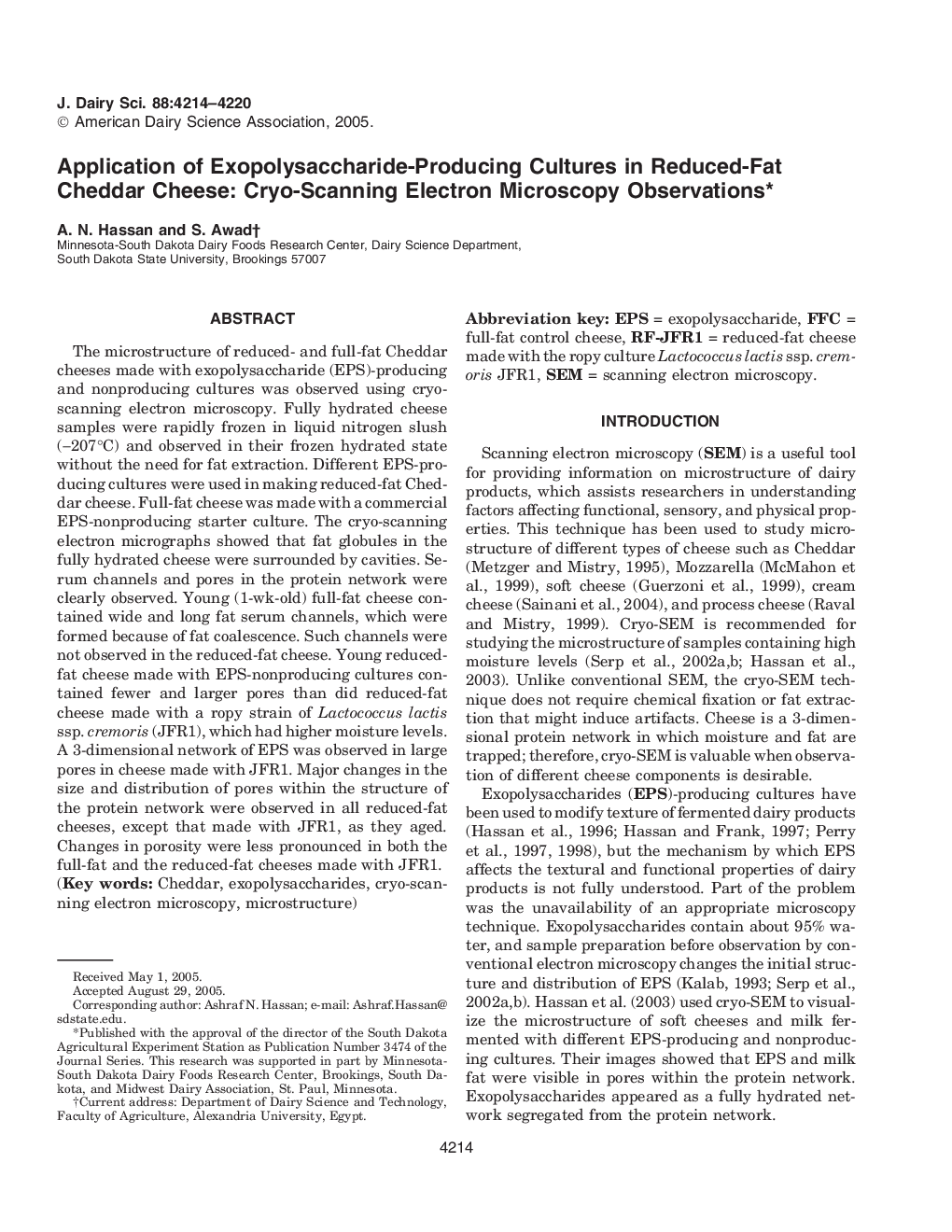| Article ID | Journal | Published Year | Pages | File Type |
|---|---|---|---|---|
| 2441663 | Journal of Dairy Science | 2005 | 7 Pages |
Abstract
The microstructure of reduced- and full-fat Cheddar cheeses made with exopolysaccharide (EPS)-producing and nonproducing cultures was observed using cryo-scanning electron microscopy. Fully hydrated cheese samples were rapidly frozen in liquid nitrogen slush (â207°C) and observed in their frozen hydrated state without the need for fat extraction. Different EPS-producing cultures were used in making reduced-fat Cheddar cheese. Full-fat cheese was made with a commercial EPS-nonproducing starter culture. The cryo-scanning electron micrographs showed that fat globules in the fully hydrated cheese were surrounded by cavities. Serum channels and pores in the protein network were clearly observed. Young (1-wk-old) full-fat cheese contained wide and long fat serum channels, which were formed because of fat coalescence. Such channels were not observed in the reduced-fat cheese. Young reduced-fat cheese made with EPS-nonproducing cultures contained fewer and larger pores than did reduced-fat cheese made with a ropy strain of Lactococcus lactis ssp. cremoris (JFR1), which had higher moisture levels. A 3-dimensional network of EPS was observed in large pores in cheese made with JFR1. Major changes in the size and distribution of pores within the structure of the protein network were observed in all reduced-fat cheeses, except that made with JFR1, as they aged. Changes in porosity were less pronounced in both the full-fat and the reduced-fat cheeses made with JFR1.
Keywords
Related Topics
Life Sciences
Agricultural and Biological Sciences
Animal Science and Zoology
Authors
A.N. Hassan, S. Awad,
